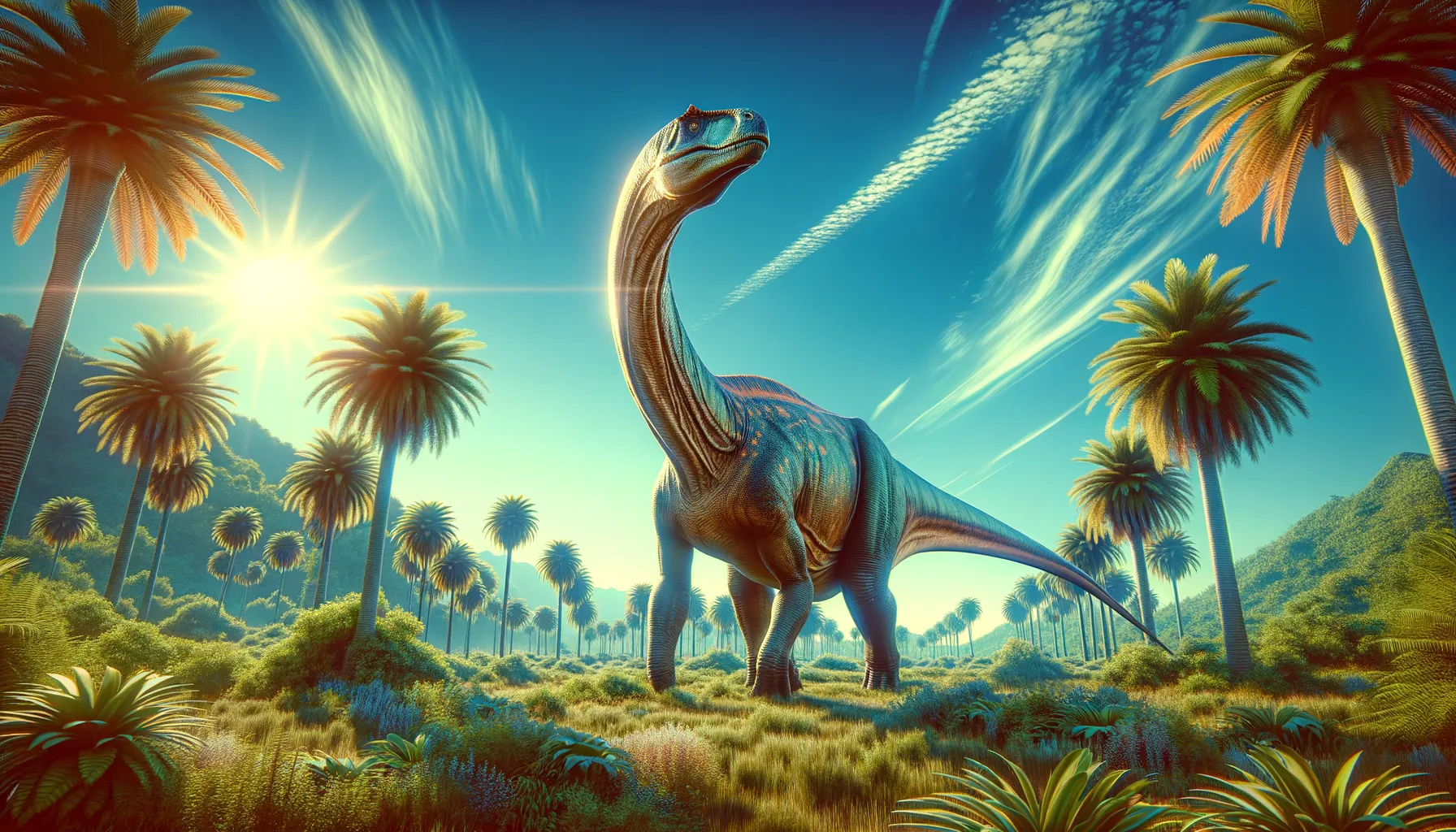
Eobrontosaurus
Gentle giant towering through time.
Period
Jurassic
Length
Around 66 to 72 feet long.
Height
Up to 15 feet at the shoulder.
Weight
Approximately 15-20 metric tons.
Eobrontosaurus was a large sauropod dinosaur that roamed the lush landscapes of the late Jurassic period. It is known for its long neck and tail, which helped it reach for high vegetation and maintain balance. Though primarily a grazer, this giant's gentle nature belied its massive size and presence. Its fossils have provided insights into the lives of giant herbivores millions of years ago.
Diet
Eobrontosaurus was herbivorous, primarily consuming large amounts of leafy vegetation. Its long neck allowed it to reach the foliage of tall trees, as well as graze on lower plant life.
Hunting
As a peaceful plant-eater, Eobrontosaurus did not hunt. It relied on foraging, using its height to reach food sources inaccessible to other herbivores.
Environmental challenges
Eobrontosaurus faced challenges such as changing climates during the Jurassic era, which affected food availability. Predators like large theropods posed a threat, particularly to the young and weaker individuals. Adapting to varying terrain in search of sufficient food and water was a constant necessity.
Speed
Slow-moving due to its massive size.
Lifespan
Estimated to be up to 70-80 years.
First discovery
Unearthed in 1990 in western North America.
Fun Facts
- Eobrontosaurus is a genus of dinosaur that lived during the Late Jurassic period, around 150 million years ago.
- It was a massive plant-eating dinosaur that belonged to the group known as sauropods, which are famous for their long necks and tails.
- The name 'Eobrontosaurus' means 'Dawn Thunder Lizard', reflecting its ancient origins and large size.
- Eobrontosaurus was initially thought to be a species of Brontosaurus but was later distinguished as its own separate genus.
- This dinosaur is believed to have lived in what is now North America, where it roamed vast floodplains.
- Fossils of Eobrontosaurus have provided valuable insights into the growth and development of giant sauropods.
- Although its fossils are rare, the discovery of Eobrontosaurus has helped paleontologists understand the diversity of dinosaurs during the Jurassic era.
Growth and Development
Eobrontosaurus likely experienced rapid growth during the early years to avoid predation. It would reach its massive adult size over several decades, enabling it to browse on higher vegetation. Its development involved changes in bone density and strength to support its enormous weight.
Habitat
Eobrontosaurus inhabited floodplains and open woodland areas where food was plentiful. These regions supported diverse plant life, providing abundant resources for grazing. Seasonal migrations may have occurred to optimize food consumption.
Interaction with other species
Eobrontosaurus coexisted with various herbivores and predators, forming dynamic ecosystems. Its presence possibly deterred smaller predators due to its size, but it had to be cautious of larger carnivores lurking in its environment. Interaction with other herbivores might have influenced its grazing patterns.
Natural lifespan
In the wild, Eobrontosaurus could live for about 70 to 80 years.
Reproduction
Eobrontosaurus likely laid eggs, with nesting sites shared by several females. This communal nesting behavior could have provided some protection to the vulnerable eggs and hatchlings. Young Eobrontosaurus were precocial, meaning they could move around shortly after hatching.
Social behaviour
Eobrontosaurus may have lived in herds, given the advantages of group living such as increased protection from predators. Social interactions within these groups could include cooperative care of the young and coordinated movement in search of food.
Fossil locations
Fossils of Eobrontosaurus have been located primarily in North America, notably in the Morrison Formation. These sites have helped paleontologists paint a clearer picture of the environment during the Jurassic period.
